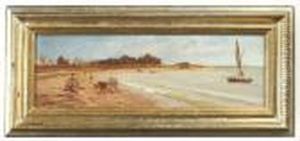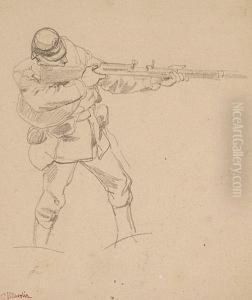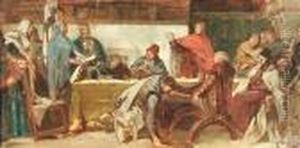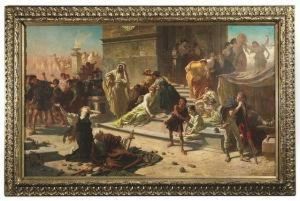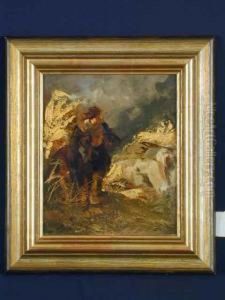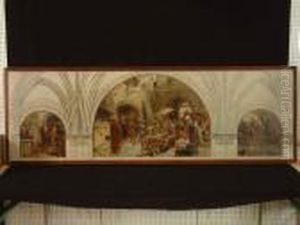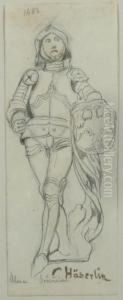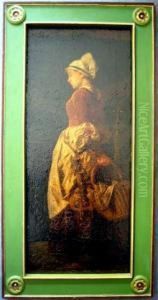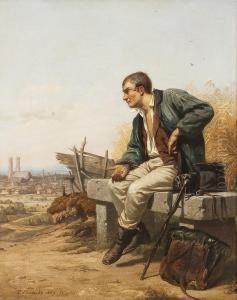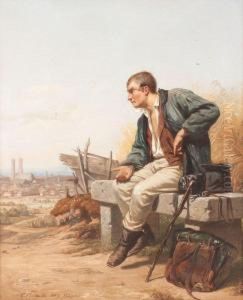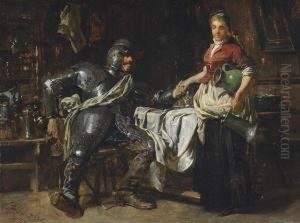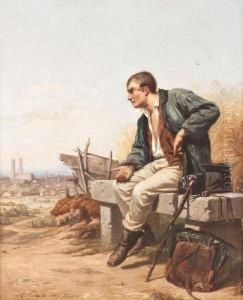Carl Von Haberlin Paintings
Carl von Häberlin was a German painter renowned for his detailed historical and genre paintings. Born on December 19, 1842, in Stuttgart, Germany, Häberlin pursued his passion for art at a young age. He studied at the Stuttgart Art School, where he honed his skills under the guidance of accomplished artists such as Bernhard von Neher and Heinrich von Rustige. Häberlin's dedication to his craft led him to further his education at the prestigious Academy of Fine Arts Munich, a center for artistic learning that attracted talents from across Europe.
Häberlin's work is characterized by its meticulous attention to historical accuracy and detail. His paintings often depict scenes from German history, literature, and everyday life, capturing the essence of the period with a remarkable sense of realism. One of his most celebrated works, 'The Trial of Martin Luther at the Diet of Worms,' exemplifies his methodical approach to depicting historical events, where he meticulously researched the subject matter to ensure authenticity in his portrayal.
Throughout his career, Häberlin exhibited his work at various prominent art exhibitions, gaining recognition and accolades for his contributions to German art. His paintings were not only appreciated for their historical value but also for their narrative depth, which engaged and captivated audiences.
Despite his success, Häberlin remained dedicated to his roots in Stuttgart, where he was actively involved in the local art scene. He was a member of several art associations and contributed to the development of art education in the region.
Carl von Häberlin passed away on February 21, 1916, leaving behind a legacy of work that continues to be studied and admired for its historical significance and artistic merit. His contributions to the field of historical painting have cemented his place as one of the notable German artists of the 19th century, remembered for his ability to bring history to life through his detailed and evocative canvases.
